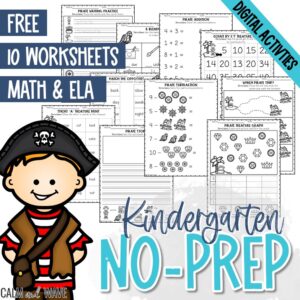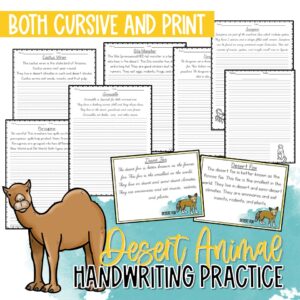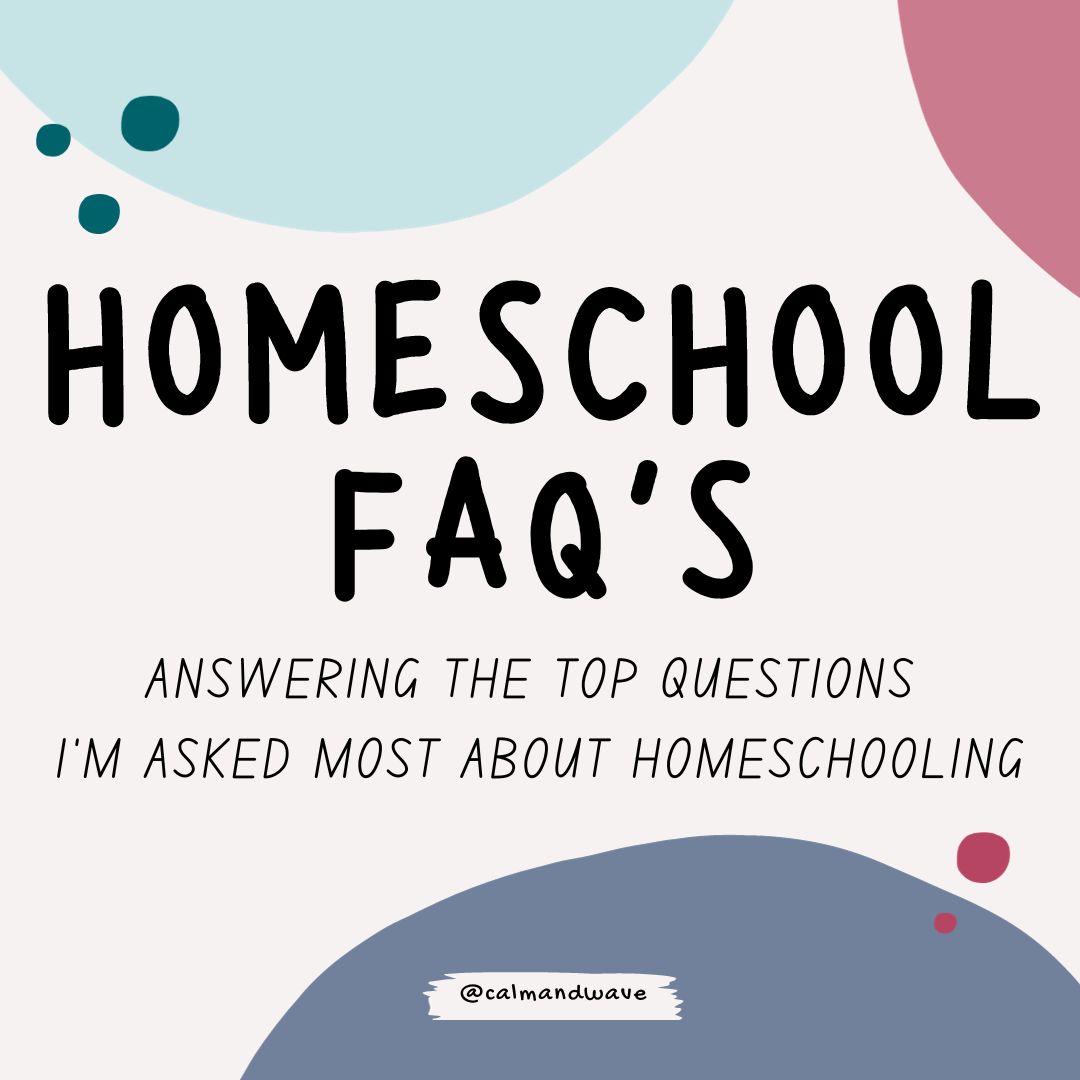
As a mom who has homeschooled for a long time, I am used to getting lots of questions. Parents who are thinking about homeschooling and people who are just interested in it often ask me about different parts of homeschooling. In this blog post, I will answer the frequently asked questions about homeschooling that I am asked the most.
Whether you're a parent on the fence about homeschooling your child, a seasoned educator seeking a fresh perspective, or someone just interested in the inner workings of homeschooling, this guide is designed with you in mind. We'll also touch upon the challenges and rewards that come along with it, offering real-life examples that bring the reality of homeschooling to life. So, whether you're actively considering homeschooling or simply curious about what it entails, buckle up and join me as we explore the fascinating world of homeschooling.
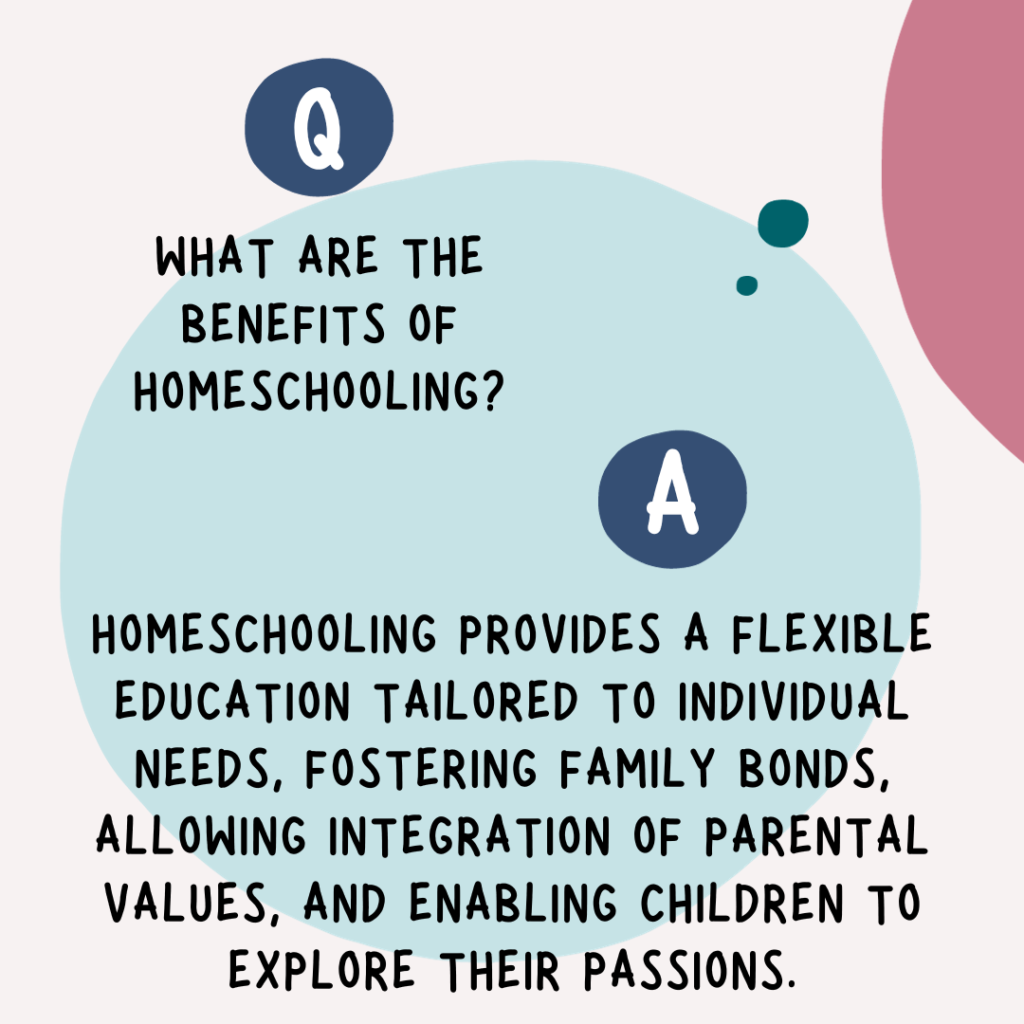
What are the benefits of homeschooling?
Homeschooling allows for personalized learning, schedule flexibility, and can often strengthen family bonds. It also allows parents to incorporate their values and beliefs into their child's education. For us, this means being able to do school when it is convenient for our family. We homeschool year-round so that we can take time off as needed. It also allows my kids to learn at the level that is best for them in every subject. They also get to follow their passions with the extra time that homeschooling allows them.
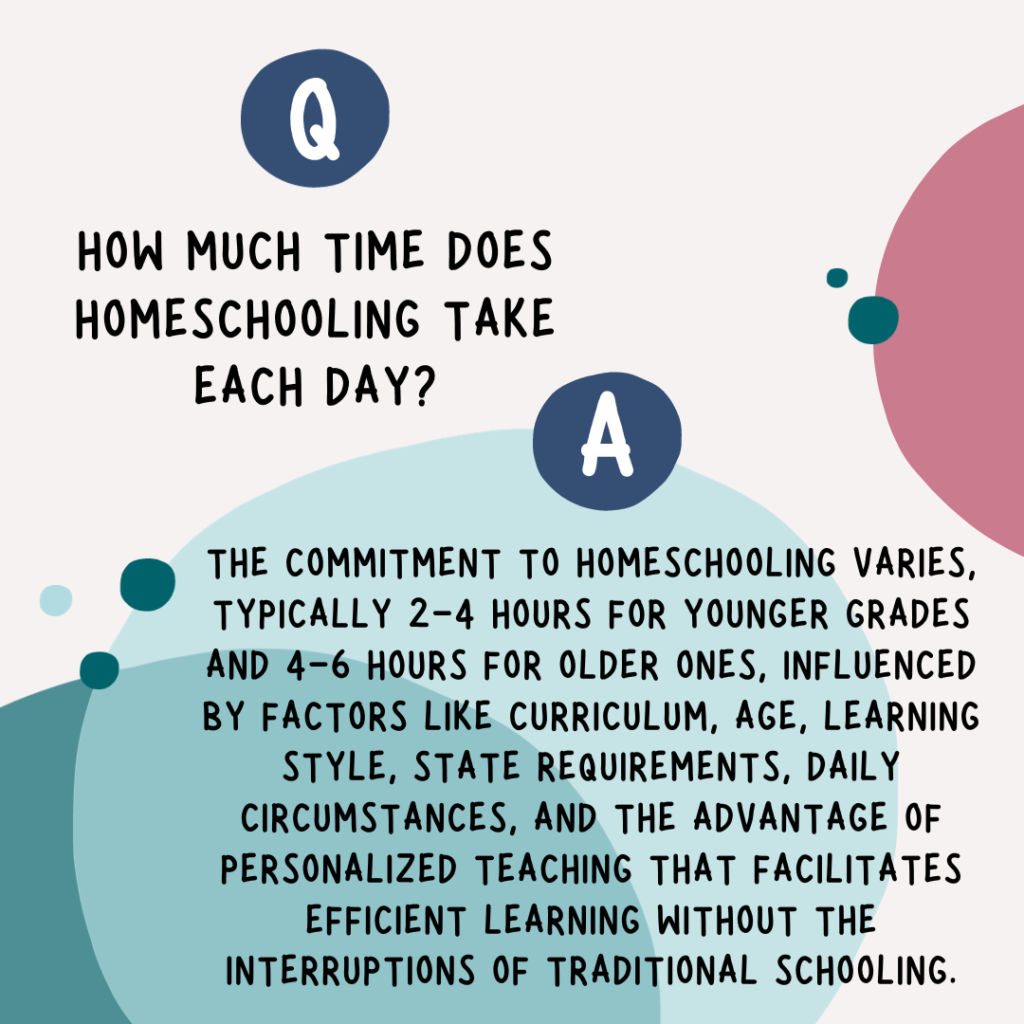
How much time does homeschooling take each day?
The time commitment for homeschooling can vary based on the curriculum, the child's age and learning style, and other factors. Some states mandate the required time, while others have a set number of days. For us, it usually takes 2-4 hours for younger grades and 4-6 hours for older grades. It depends daily on many factors, including the lesson content, the kiddos' willingness to do school, and more. One of the biggest advantages is being able to teach 1:1 on subjects that need more attention. It helps the child to learn more efficiently and we are able to move on as the subject is grasped. We also do not have to wait for a classroom of kids, outside interruptions, and more that affect traditional school learning.
What curriculum should I use for homeschooling?
There are many different curriculum options available for homeschooling, depending on the child's grade level, learning style, and your educational philosophy. A boxed curriculum could be a good option if you are just starting out. It will help you to “dip your feet” into the waters of homeschooling and guide you on what works best for your family. We are eclectic homeschoolers, I piece together the kids' curriculum based on their individual needs and levels.
How can I ensure my child is socializing enough?
There are many ways to ensure your homeschooled child gets plenty of social interaction, such as participating in extracurricular activities, joining homeschool co-ops or groups, and arranging playdates with other children. Even going to the grocery store can be a socialization experience (and a learning experience). Let your child be the one to interact with the cashier, they will be learning valuable life skills as well.
Can I homeschool if I work full-time?
While challenging, it is possible to homeschool while working full-time. This often involves creative scheduling, seeking help from other family members, or a homeschool co-op. Flexibility would be key in this situation. Nowadays, there are many different options for work-from-home jobs that might be a perfect fit for both working full-time and homeschooling.
How do I know if my child is learning enough?
Regular assessments, both formal and informal, can help gauge your child's progress. Additionally, standardized tests can provide a benchmark for comparison to traditionally schooled students. Some states require students to take tests periodically.
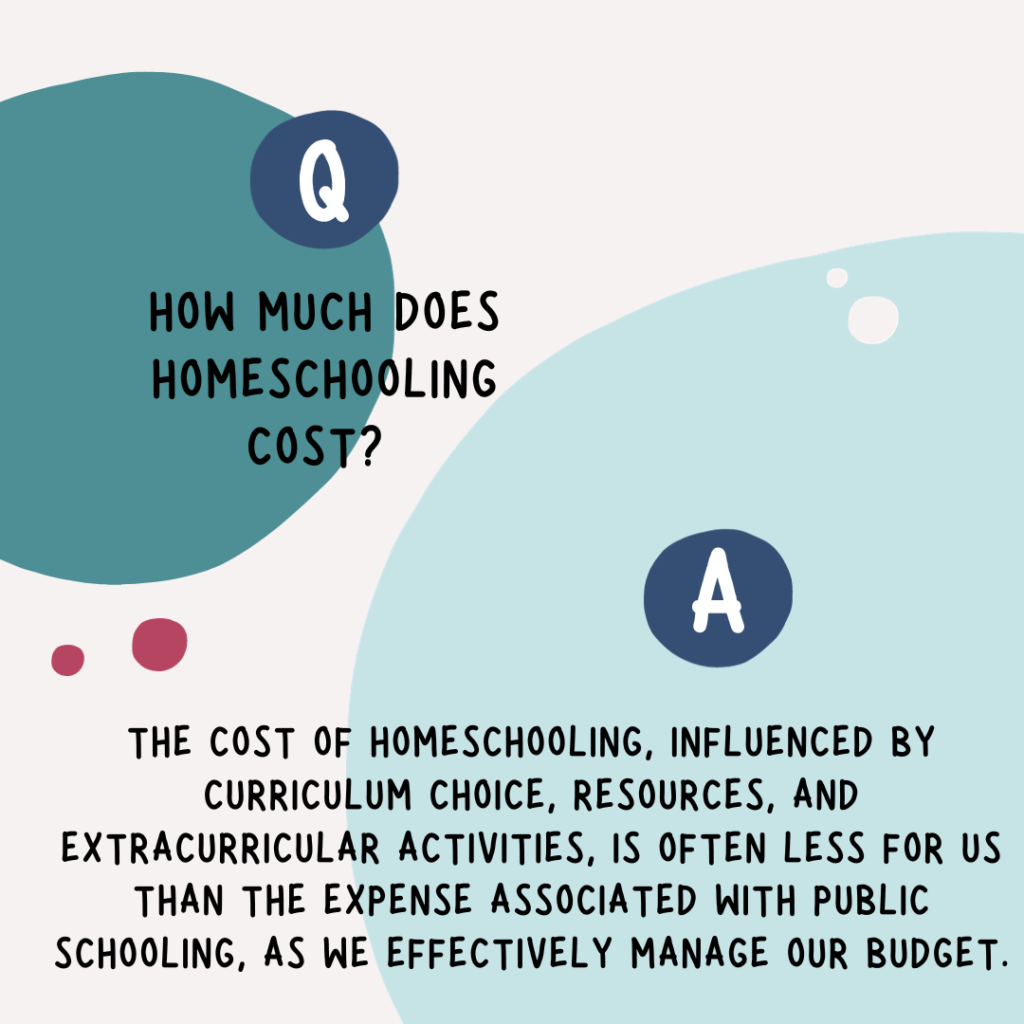
How much does homeschooling cost?
The cost of homeschooling can vary greatly depending on the curriculum you choose, the resources you use, and any extracurricular activities your child participates in. For us, homeschooling costs less than it would cost for us to get supplies for a public school situation. Here are a couple of blog posts about how we homeschool on a budget.
How to Homeschool on a Budget: 4 Tips to Stretch Your Money
The Best Places To Find Homeschool Curriculum And Resources On A Budget
What if I don't feel qualified to teach certain subjects?
There are many resources available for parents who feel unqualified to teach certain subjects, including online courses, tutors, and co-op classes. You can also learn alongside your child. Almost all curriculum comes with a teacher’s guide that will walk you through the material if needed. For us, language arts was never my strong suit. Spelling gives me fits. But the curriculum we use has taught the kids better than I could on my own, and I have also learned along with them.
How do you teach multiple grade levels at home?
Teaching multiple grade levels at home can be challenging, but it's not impossible. The key lies in organization, planning, and flexibility. Start by creating a structured schedule that accommodates the unique learning needs of each child. This might involve dedicated time blocks for individual instruction and periods of independent study where older students can work independently while you focus on younger ones. Incorporate multi-level teaching methods, such as project-based or thematic learning, which can engage all students irrespective of their grade level. For instance, if we are doing a science unit about plants, the younger kids can draw and label parts of a plant, while the older kids can dive into more complex topics like photosynthesis.
Do you have to follow the public school calendar?
As a homeschooler, you are not necessarily required to follow the public school calendar. The beauty of homeschooling lies in its flexibility, allowing for learning at a pace and schedule that best suits your child's needs. However, it's important to check with your local and state homeschooling laws, as some places may require a certain number of homeschooling days per year. But within those parameters, you have the freedom to choose when those days happen—whether it aligns with the public school calendar or not. This flexibility can offer opportunities for learning during traditional school breaks, taking vacations during off-peak times, and tailoring your schedule to accommodate your family's unique needs and lifestyle. For our family, we homeschool year-round, being able to take time off when needed was one of the biggest draws to homeschooling.
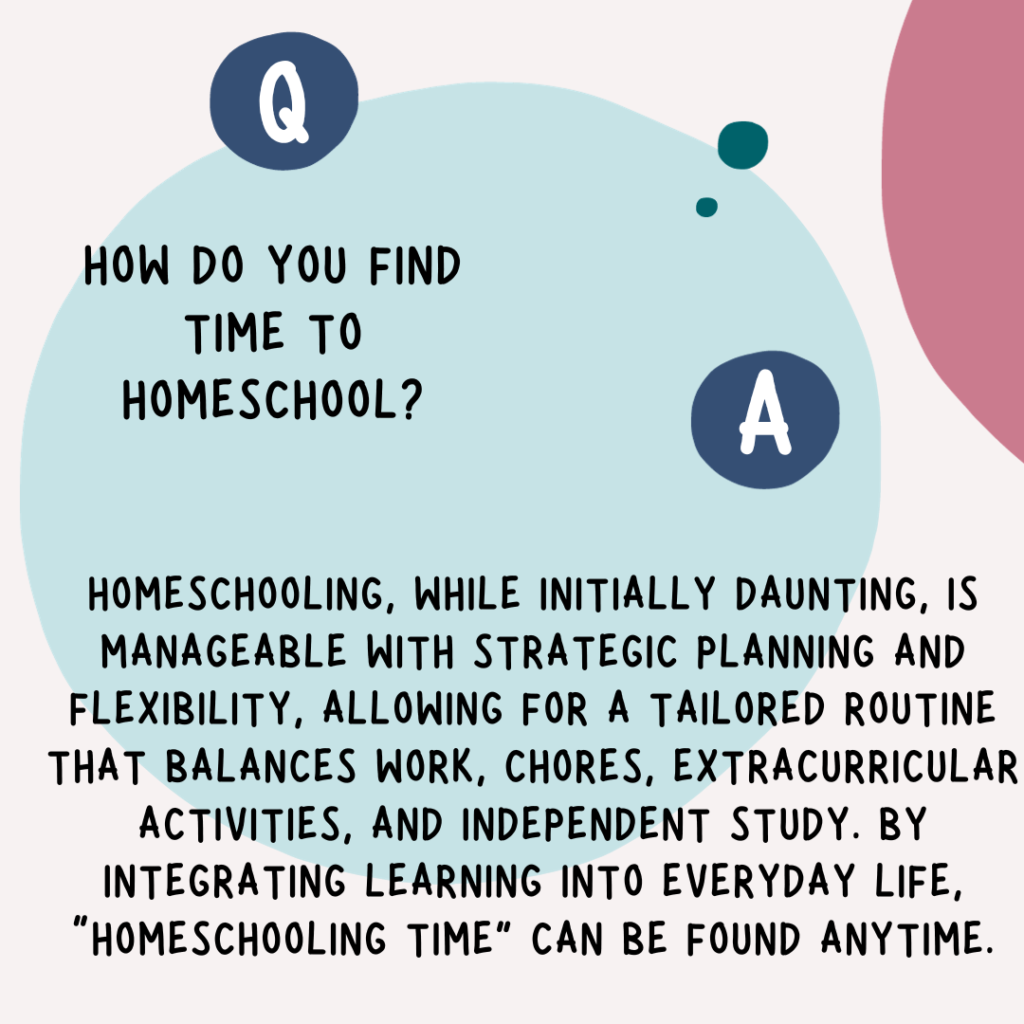
How do you find time to homeschool?
Finding time to homeschool can initially seem challenging, but it becomes manageable with strategic planning and flexibility. One of the key advantages of homeschooling is its adaptability to your family's schedule. You can design a routine that fits around your work commitments, household chores, and extracurricular activities. Remember, homeschooling doesn't need to replicate the traditional school day. Instead, learning can be woven into everyday life experiences, and it doesn't have to happen all at once. Breaking up lessons into smaller, more manageable chunks throughout the day can make it feel less overwhelming. Also, utilizing resources like online courses, educational games, and learning apps can help facilitate independent study times. It's about finding a rhythm that works best for your family, allowing for a balanced blend of academic learning, practical life skills, and leisure time. Planning out our days in advance has made all the difference in our homeschooling adventure.
If you have any other questions about homeschooling, feel free to leave them in the comments below, and I'll answer them as best I can. Happy homeschooling!


